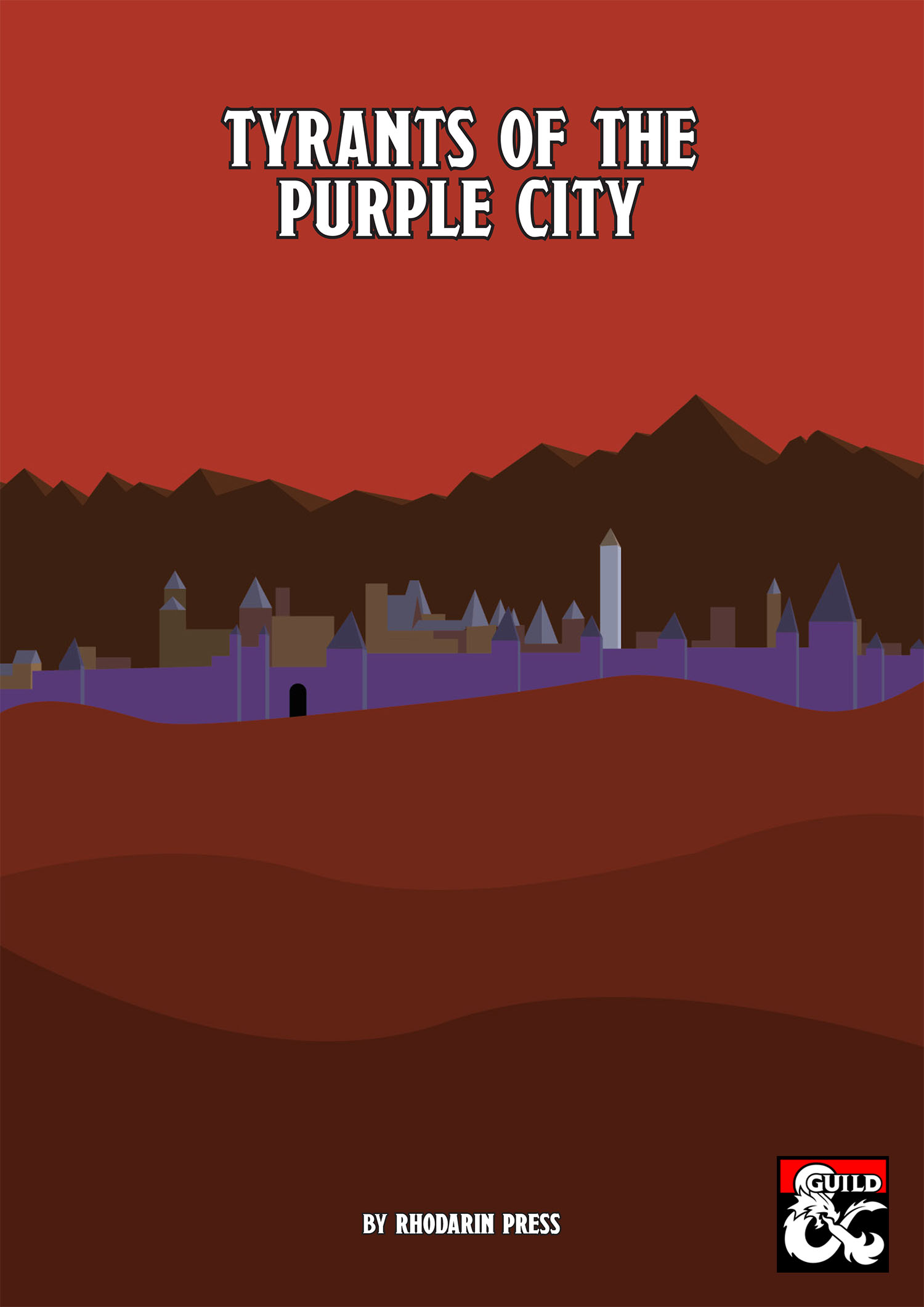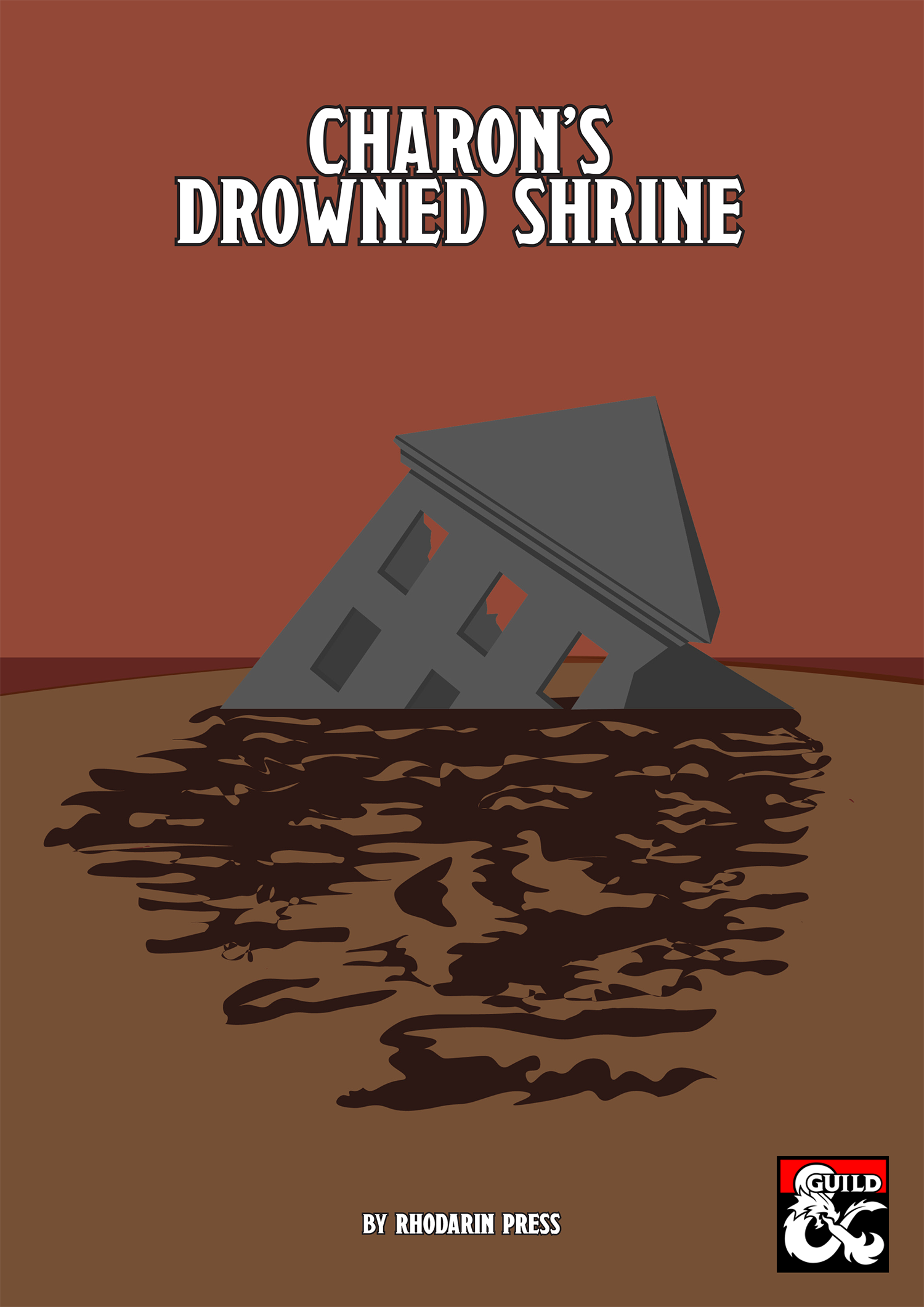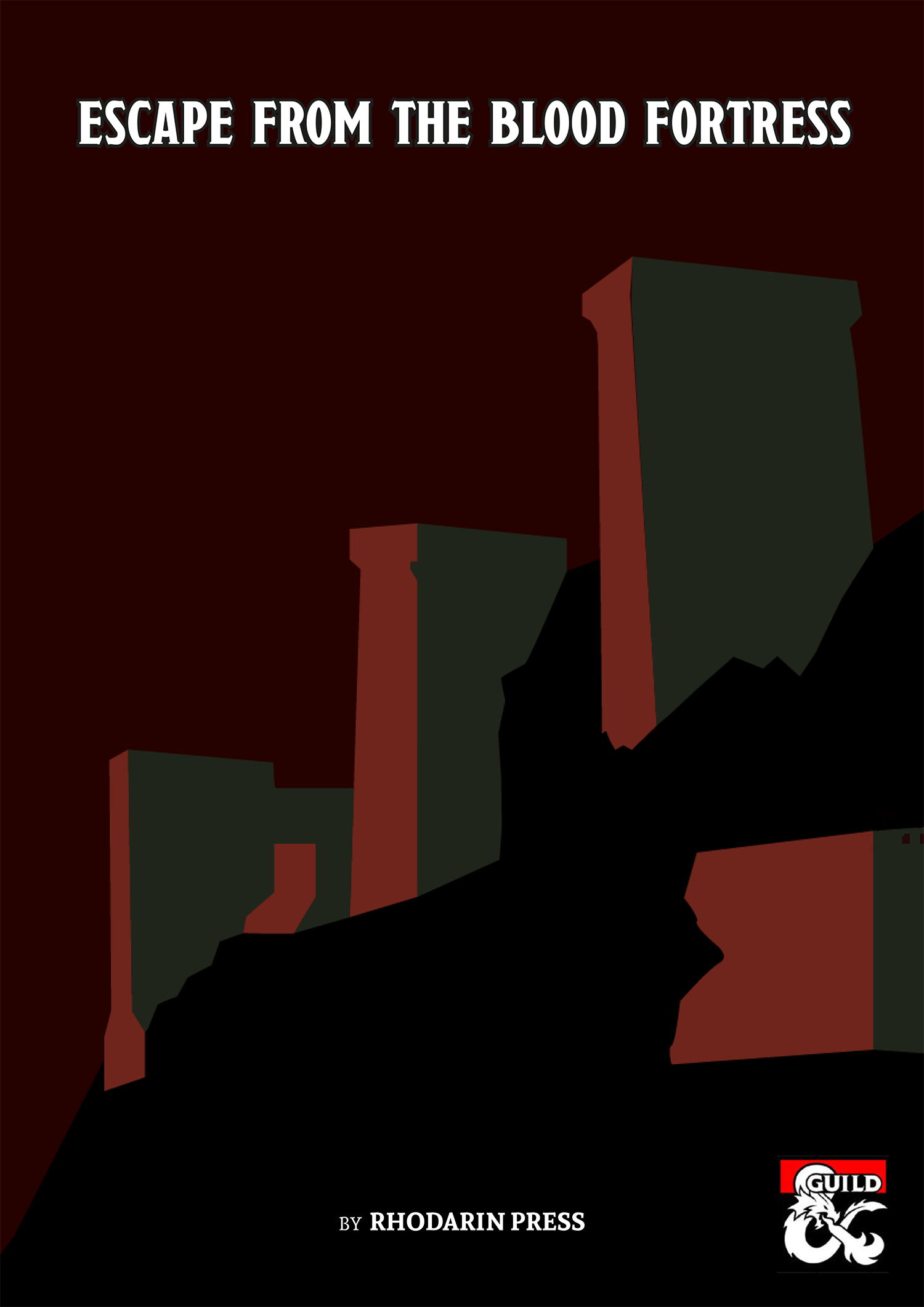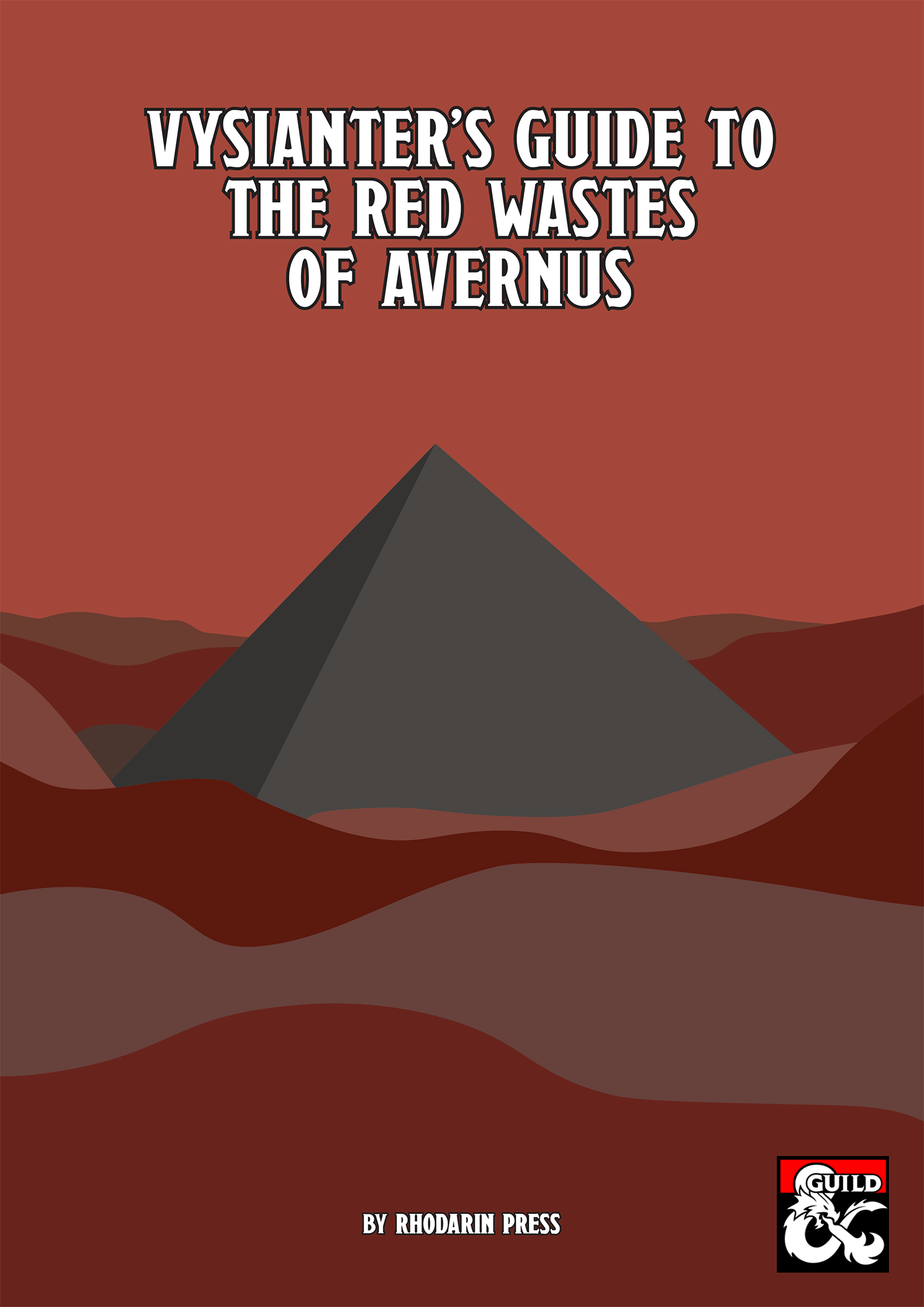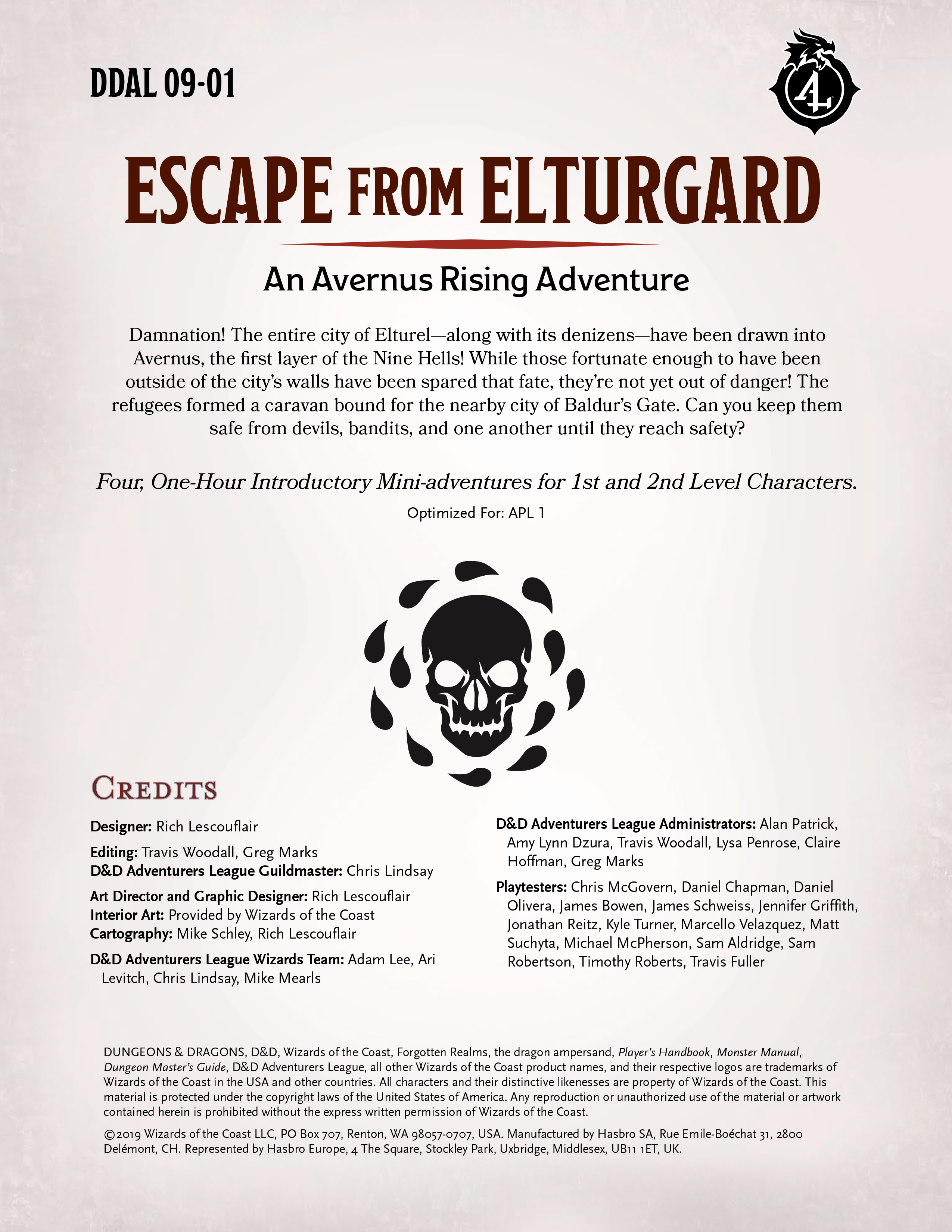 ESCAPE FROM ELTURGARD (DDAL 09-01): It’s not really surprising that both I (in the Avernus Remix) and Rich Lescouflair in Escape From Elturgard conclude that the best way to start the saga of Elturel’s fall is in a refugee caravan heading from the outskirts of the fallen city to Baldur’s Gate. There’s just no better or more immediate way of introducing the PCs to the crisis and, importantly, the lives most dramatically affected by.
ESCAPE FROM ELTURGARD (DDAL 09-01): It’s not really surprising that both I (in the Avernus Remix) and Rich Lescouflair in Escape From Elturgard conclude that the best way to start the saga of Elturel’s fall is in a refugee caravan heading from the outskirts of the fallen city to Baldur’s Gate. There’s just no better or more immediate way of introducing the PCs to the crisis and, importantly, the lives most dramatically affected by.
Escape from Elturgard employs a clever design that can be used as four stand-alone, one-hour sessions or one longer, cohesive session with the caravan encountering multiple challenges. Three of the scenarios involve gathering supplies for the caravan before it departs, while the fourth takes place on the road.
The custom illustrations of every significant NPC in the caravan are a particularly nice touch and a great resource for this kind of adventure.
The grit in the wheel here, however, are the continuity errors. None of them are particularly large or fundamentally crippling, but they are everywhere – a constant, pervasive annoyance that never really goes away.
A good example of what I mean is the opening paragraphs of the second interlude/adventure, which has the quest giver say, “See that cart? It belongs to Ippon the Miller. Take it to the mill and gather supplies.” So the PCs walk over to Ippon and he says, “See this cart that definitely doesn’t belong to me? I think we should take it.” You can see how that doesn’t really break anything, but is nevertheless remarkably jarring.
The three “prep the caravan” sections of Escape From Elturgard are the scenario’s best parts and easily scavengable for a Remix campaign, with a couple provisos: First, the wacky “go on a shopping trip for paper and ink for a poet who otherwise refuses to join the refugee caravan” is, in my opinion, tonally inappropriate for the post-apocalyptic setting. Second, some of the adventures include devils roaming the countryside around Elturel as if they had “attacked” the city, but the continuity leading to that is a little hazy. (Elturel was sucked into Hell; it wasn’t attacked by devils.)
The fourth section of the scenario involves a secret cultist in the caravan murdering one of the other refugees and the PCs needing to solve the crime. This section of the adventure is not very good. The mystery is simply not handled very well, in no small part because the murder doesn’t actually make any sense.
- Grade: C-
The next three adventures – Stopped at the Gate, Hungry Shadows, and The Day of the Devil – form the Betrayal in Blood series.
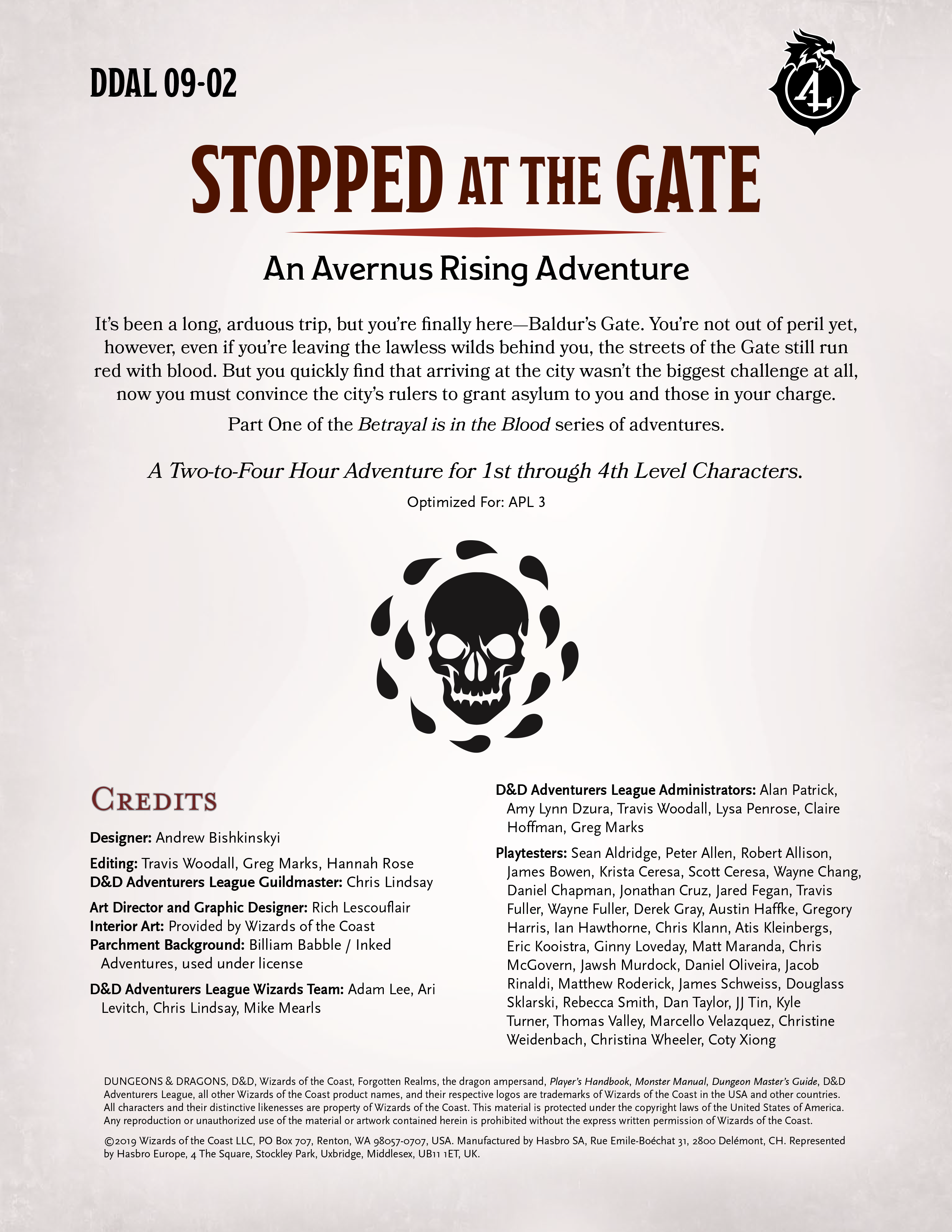 STOPPED AT THE GATE (DDAL 09-02): Like other seasons of the Adventurers Guild, Season 9 reflects the events of that year’s major campaign book, in this case Descent Into Avernus. But this one reflects the campaign book rather more closely than other seasons that I’m familiar with, and, frankly, the effect is rather ludicrous.
STOPPED AT THE GATE (DDAL 09-02): Like other seasons of the Adventurers Guild, Season 9 reflects the events of that year’s major campaign book, in this case Descent Into Avernus. But this one reflects the campaign book rather more closely than other seasons that I’m familiar with, and, frankly, the effect is rather ludicrous.
Whereas Descent Into Avernus features the PCs being hired by a Flame of the Flaming Fist to investigate a Cult of Zariel in Baldur’s Gate murdering refugees under the instructions of a devil named Gargauth, these Adventurers League scenarios feature the PCs being hired by a different Flame of the Flaming Fist to investigate a different Cult of Zariel in Baldur’s Gate who are also murdering refugees for a different reason while being instructed by a different devil whose name starts with G (Gharizol).
With all the fascinating stories that could be told within the period of upheaval created by the Fall of Elturel in both Elturgard and Baldur’s Gate, the fact that the only thing the Adventurers Guild could think of was, “I dunno… I guess just the exact same story?” is not only incredibly disappointing, but also a huge disservice to anyone playing in both an AL and Descent Into Avernus campaign.
And it’s a millstone that none of the individual scenario writers are really capable of overcoming.
In Stopped at the Gate, the PCs need to investigate the murder of Marcus Hallgate. The poor design of the mystery can be exemplified by the first scene. The PCs can get two clues, both delivered by the victim’s wife:
- There have been other murders. The PCs are not expected to investigate any of these, but they can talk to a city watchman who “knows more.” (He doesn’t.)
- A friend of the Hallgates purchased a gift for the wife several days ago. (The gift has absolutely no connection to the murder, but apparently the PCs are supposed to follow up on this out of desperation.)
So the PCs leave the scene with two clues (sort of), and then this happens:
If the characters choose to see Dovis first, he’s at his post by the Heap Gate (Scene C). If they choose to go to Harwin’s shop first (Scene D), they end up encountering Dovis before they get there.
It’s not just that it’s railroading. It’s that the railroading is both transparent and completely pointless. In any case, they (hopefully) go to Harwin’s shop and his assistant tells them:
A couple of days ago, Harwin left to check on the shearing operations outside of town. This was strange; they had wool and Harwin didn’t like the sheep. Harwin must have left before Zook got to the shop this morning, since the tea in Harwin’s mug was still warm.
So he left a couple of days ago, but the tea in his mug was still warm this morning?
It turns out that Harwin is being controlled by a devil named Gharizol. Gharizol hatched a “brilliant” plan for killing Marcus Hallgate:
- Make a fancy dress for Marcus’ wife so that she would go dancing!
- She will not, of course, take her husband to go dancing with her!
- Then, having gotten his wife out of the way, kill Marcus… while he is walking down a busy street and in no way in a location where his wife’s presence or absence would be meaningful!
Just… astounding.
In my opinion, this scenario is completely unusable.
- Grade: F-
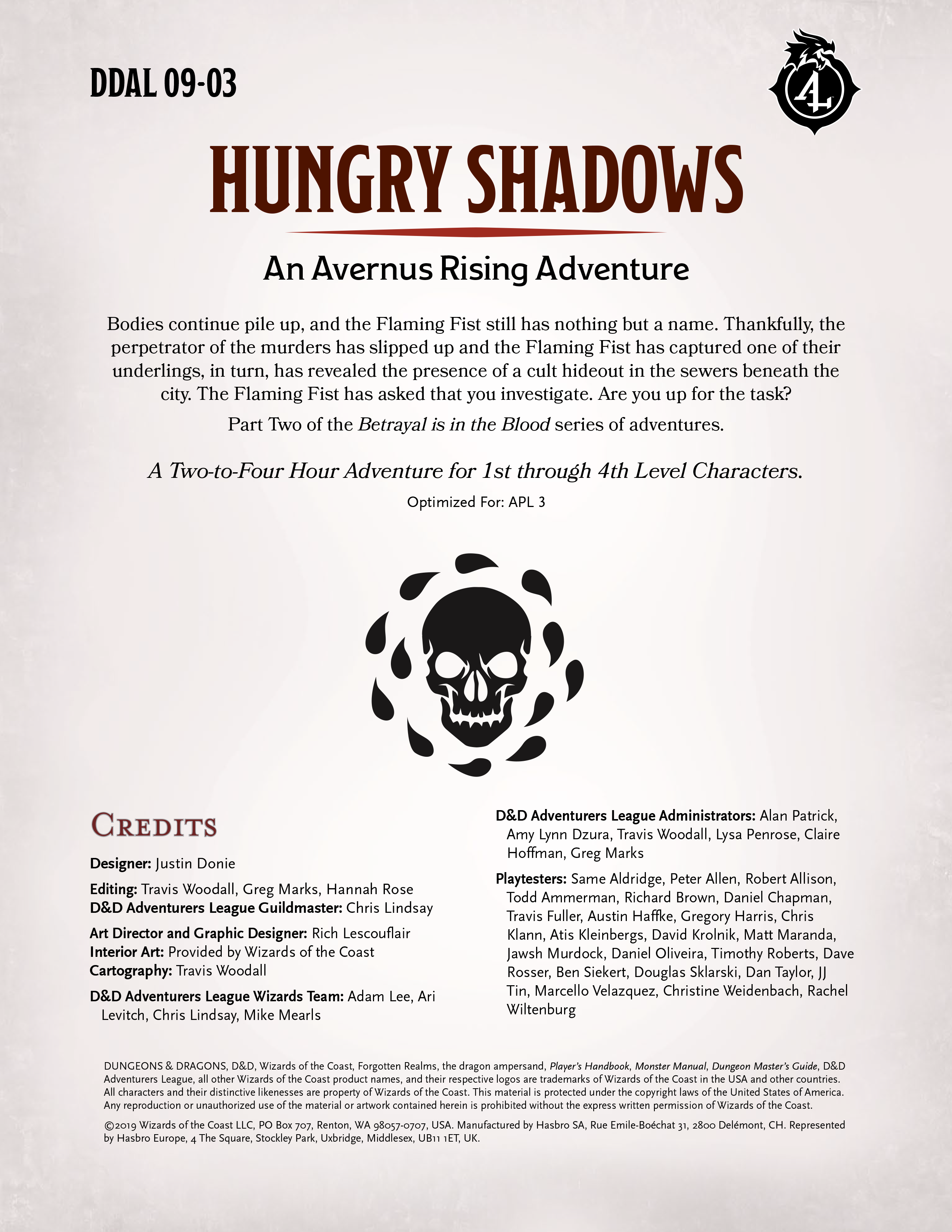 HUNGRY SHADOWS (DDAL 09-03): In Hungry Shadows, the PCs are engaged to investigate another murder related to the Cult of Zariel.
HUNGRY SHADOWS (DDAL 09-03): In Hungry Shadows, the PCs are engaged to investigate another murder related to the Cult of Zariel.
The fundamental problem here is the continuity. Initially, I thought it was just presented in an utterly baffling fashion, but having read backwards and forwards through this thing several times, I’m forced to conclude that the whole thing is, in fact, utter nonsense.
A cultist has been “murdered” in their own home with all the doors and windows locked. How did he die? Well, either some sort of devil broke down his door and killed him (what all the evidence says) OR he was casting a summoning spell, it went wrong, and something appeared in the room with him and killed him (which is what the appendix says).
Who found the body inside the locked house that no one had been inside? No idea. The adventure doesn’t say. What we DO know is that the first members of the Flaming Fist on site are actually moles who are loyal to the cult. So what do they do? Well, first they report the murder to their superior officer and wait for the PCs to be called in. And THEN they arrange a meeting with a cult member at a local tavern to tell them that they need to cover up all the evidence of the cult’s involvement.
Where is the cult located? UNDER THE MURDER VICTIM’S HOUSE.
“Features” of this adventure also include:
- A group of moles working within the Flaming Fists who conveniently self-identify themselves as moles by all wearing black kerchiefs around their necks.
- A dungeon map that not only lacks a numbered key, but also labels of any kind, making it ludicrously and unnecessarily cumbersome to run.
- A serious recommendation that PCs pause in the middle of a six room dungeon to take an eight hour long rest while the cultists in the next room politely wait before starting their ritual to summon a devil to fight the PCs.
I would consider this scenario nigh unusable, and certainly not worth the effort required to salvage something vaguely serviceable out of it.
- Grade: F
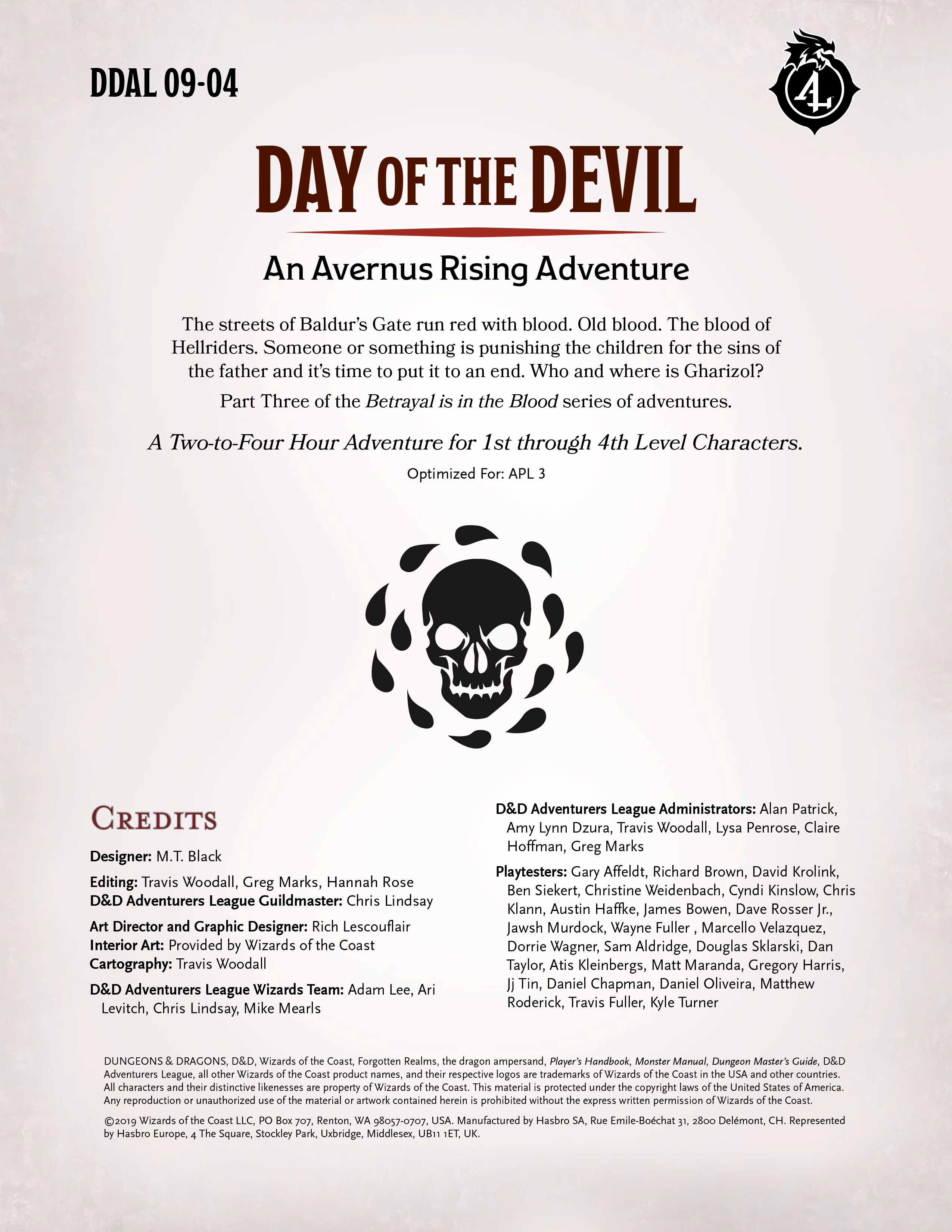 THE DAY OF THE DEVIL (DDAL 09-04): I talk about this adventure in Part 3J of the Remix, where I loosely adapt the continuity around Duke Portyr’s assassination. And the reason I wanted to adapt it is because M.T. Black has done a bang up job of it.
THE DAY OF THE DEVIL (DDAL 09-04): I talk about this adventure in Part 3J of the Remix, where I loosely adapt the continuity around Duke Portyr’s assassination. And the reason I wanted to adapt it is because M.T. Black has done a bang up job of it.
The Day of the Devil opens with the PCs listening to Duke Portyr give a speech to a large crowd. Midway through the speech, he’s shot by an infernal arrow that causes his body to explode as several devils leap out of it. The PCs’ first order of business is to deal with the devils in the midst of a panicking crowd. It’s both an explosive opening (pun intended), but also handled with great elegance through a combat complications table that neatly captures the chaotic nature of the scene in an easy-to-run mechanic.
This is followed by the revelation that the cultists are also targeting some of the refugees the PCs have befriended, triggering a great chase sequence across Baldur’s Gate to reach the warehouse where the refugees have been staying in time to stop further tragedy. This is followed by a decent siege scenario (with the PCs defending the warehouse from cultists and devils).
The only real false step with the adventure are the loose ties to the other AL adventures, which mostly crop up in the final scene: Dara, who was the leader of the refugee caravan in Escape From Elturgard, has confusingly de-aged into a ten-year-old girl (this is just a continuity error). Then she reveals that two other refugees have secretly been celestials this whole time, she has just been consecrated as a priestess of Ilmater (as a ten-year-old child?), and they’re all heading to Avernus to rescue some souls.
At which point a character the PCs have never seen before blows up one wall of the warehouse (that the PCs have just bled to defend and which the refugees are still living in) and comes riding in on a mule-drawn cart, offering to give them all a ride to Hell.
All of which I recognize is supposed to elicit a response of, “WTF?” But I suspect not quite in the tone of derision I have for it.
But, honestly, if you just ignore that entire tacked-on ending, it’s a good adventure. (It does not, however, bode well for where the series is heading.)
- Grade: B-
Go to the Avernus Remix – Go to Part 3: Behind Infernal Lines

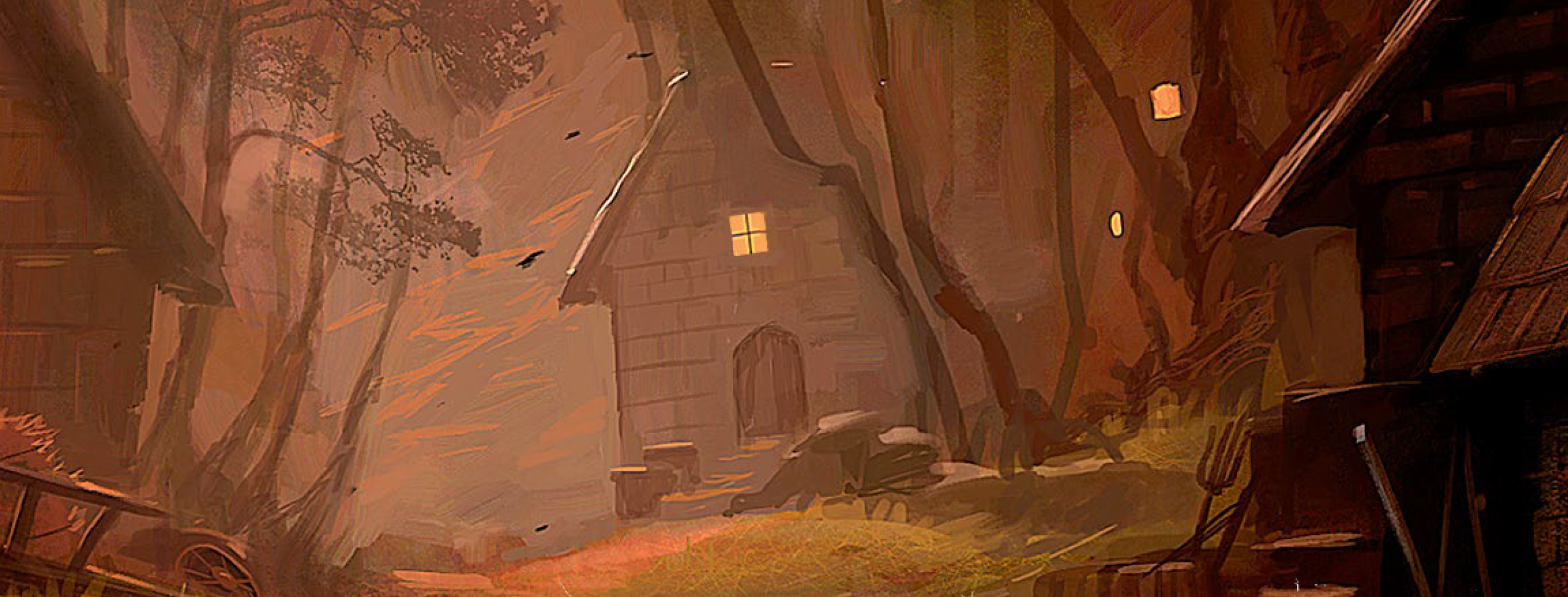
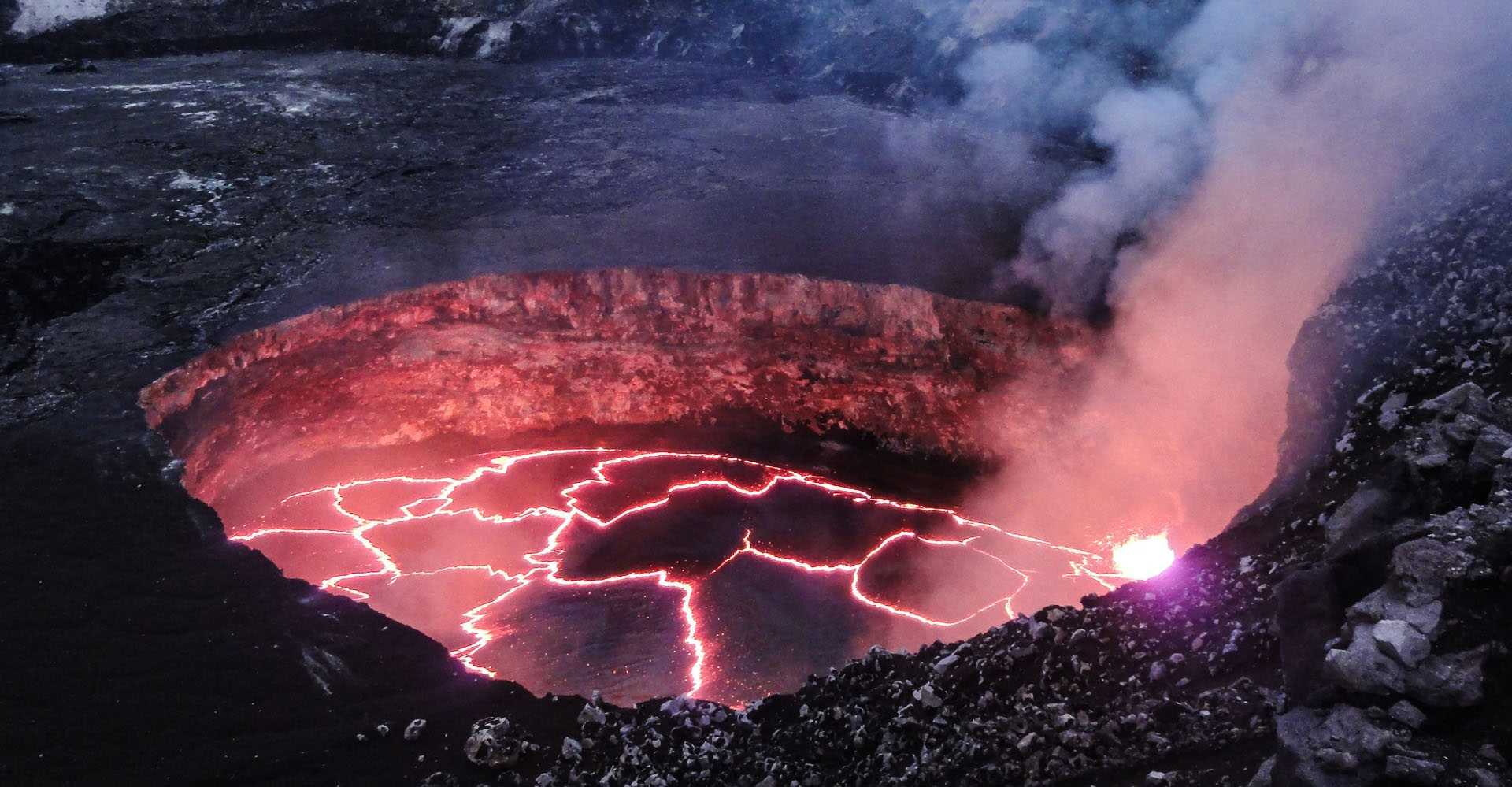
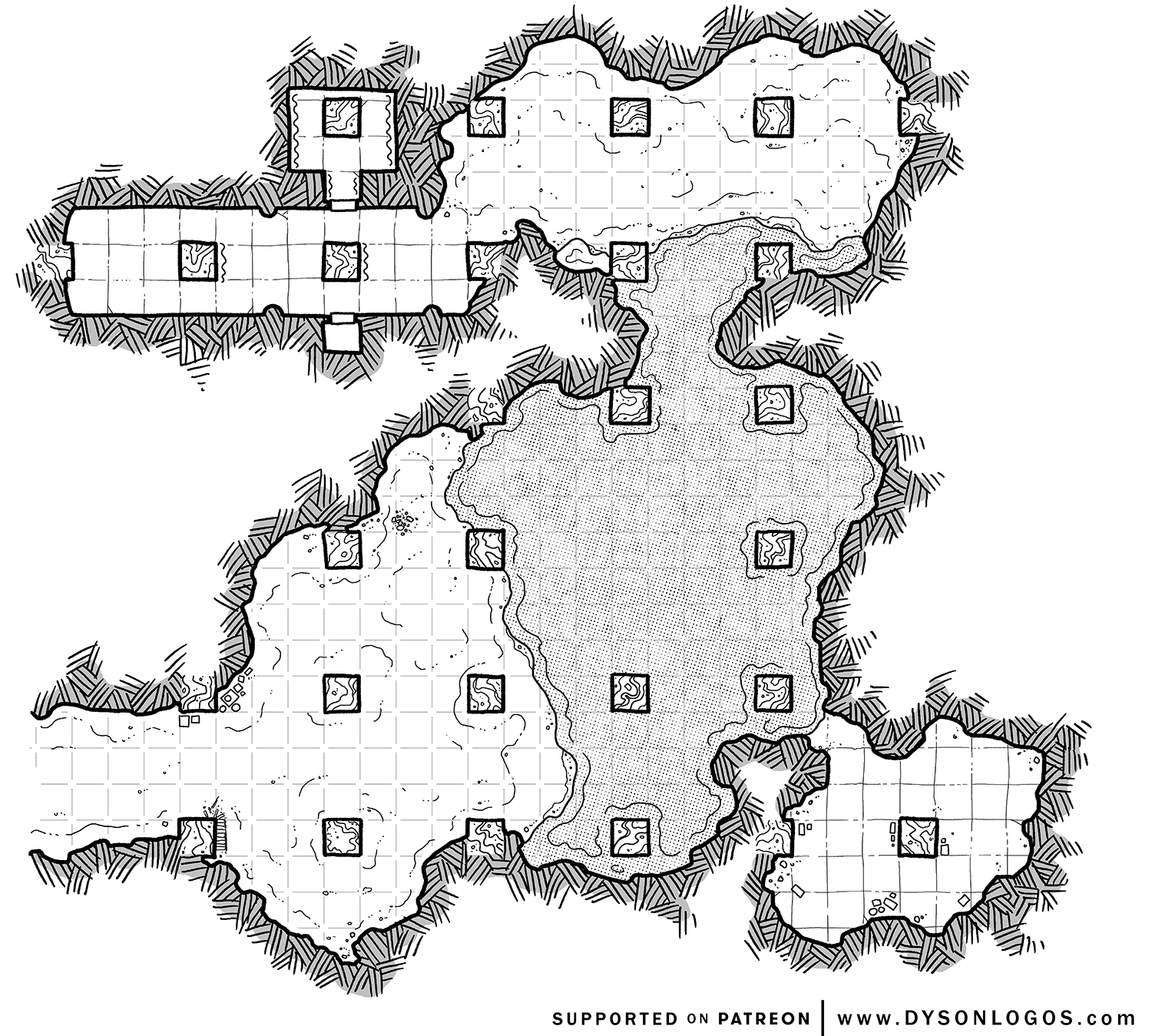
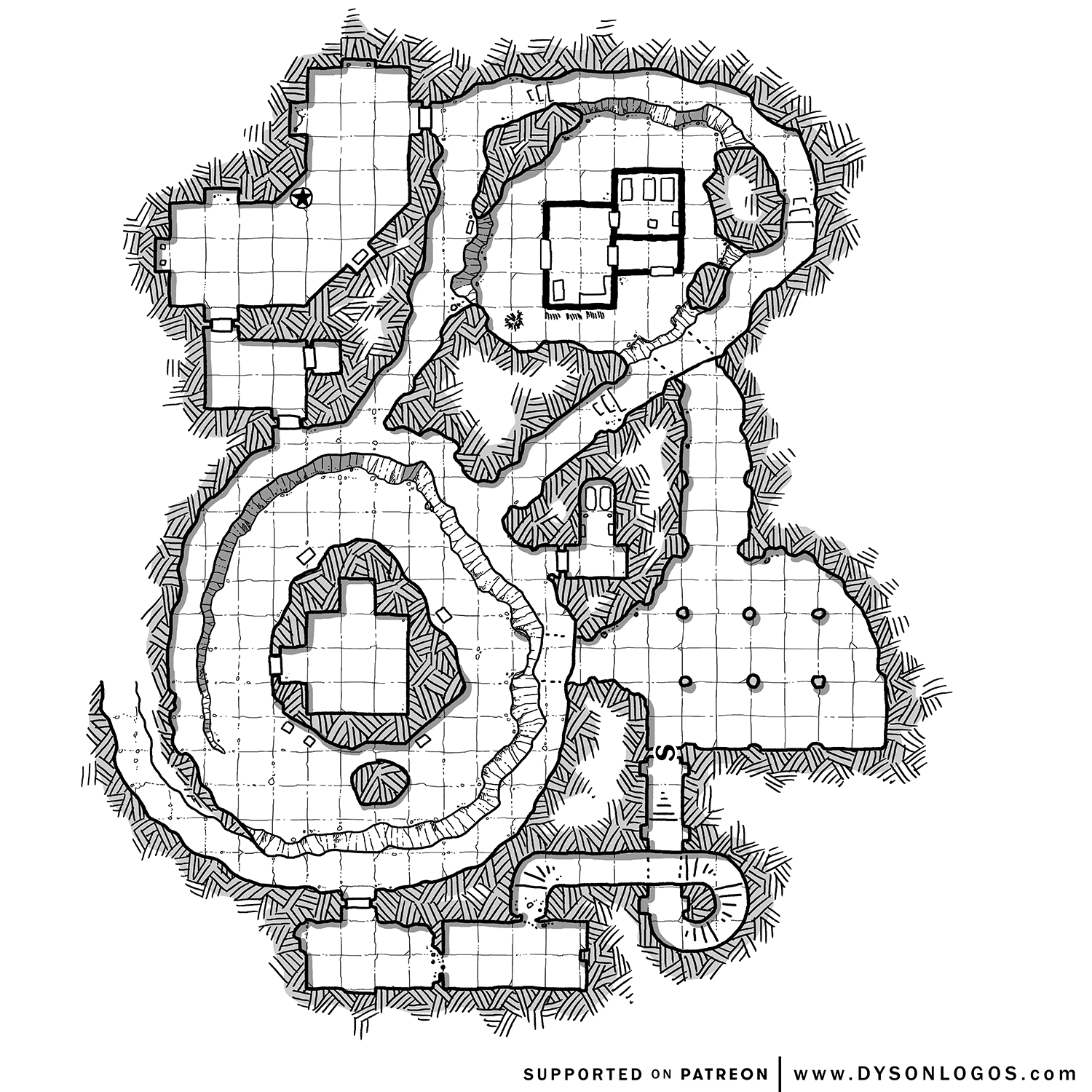
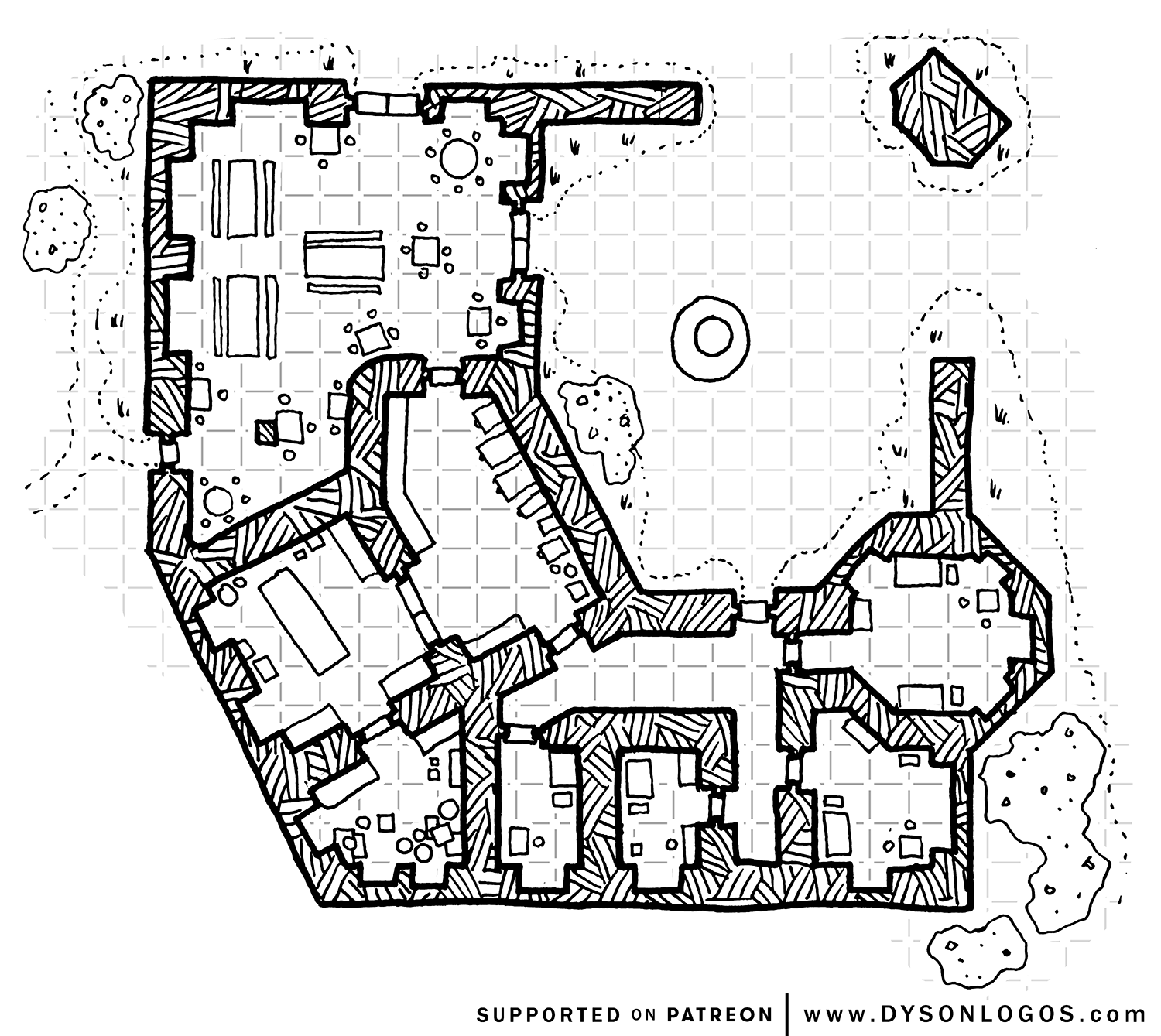
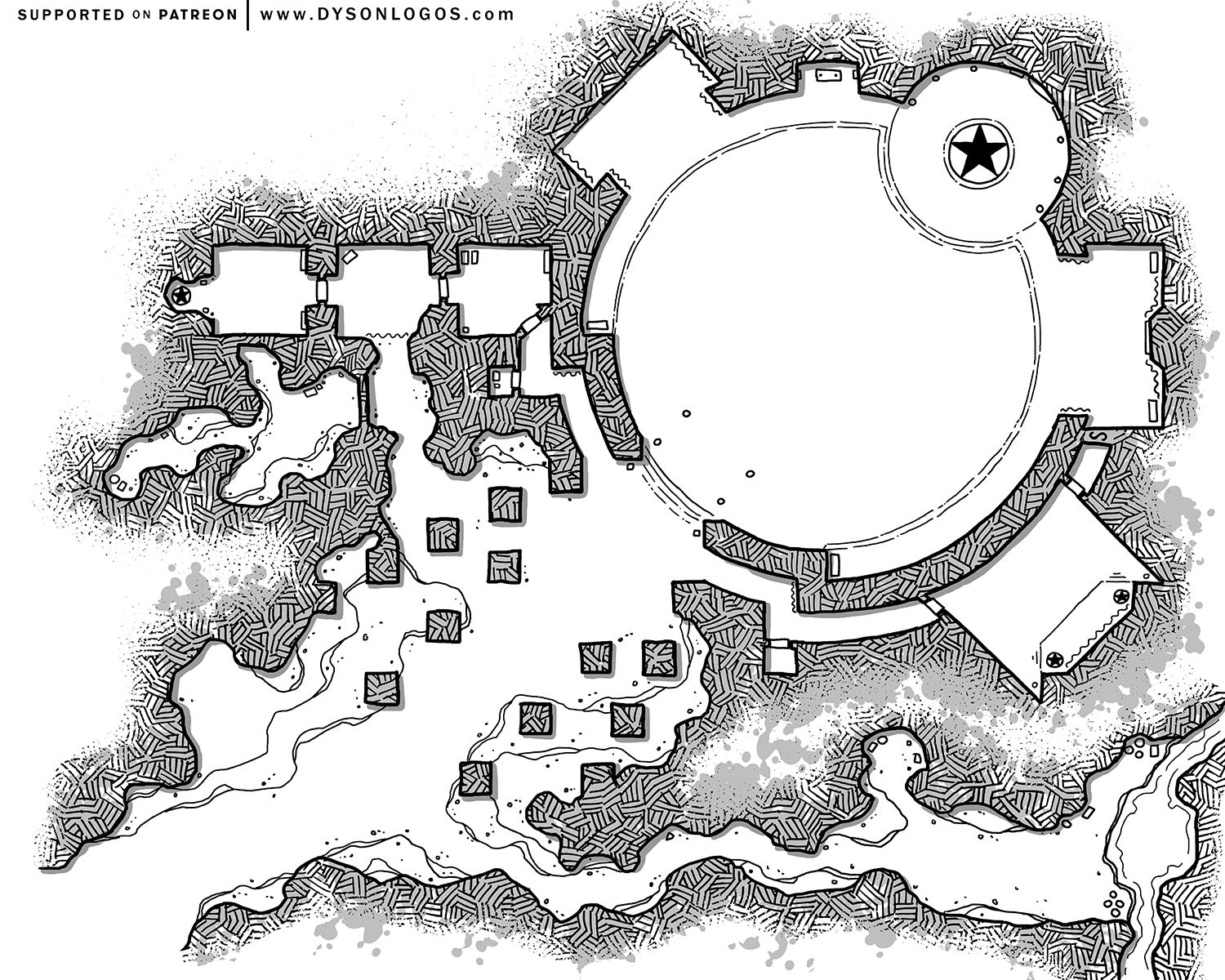
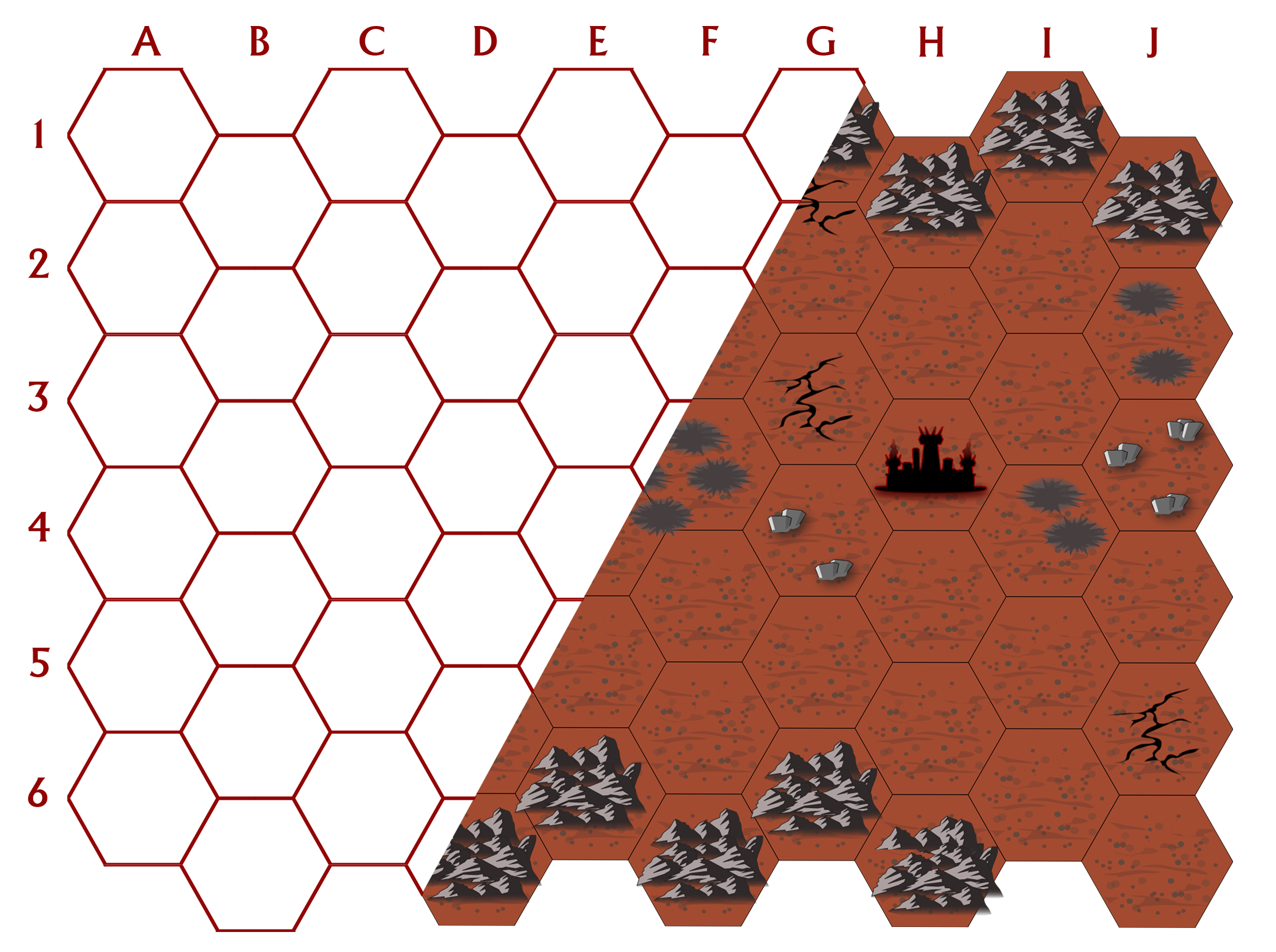
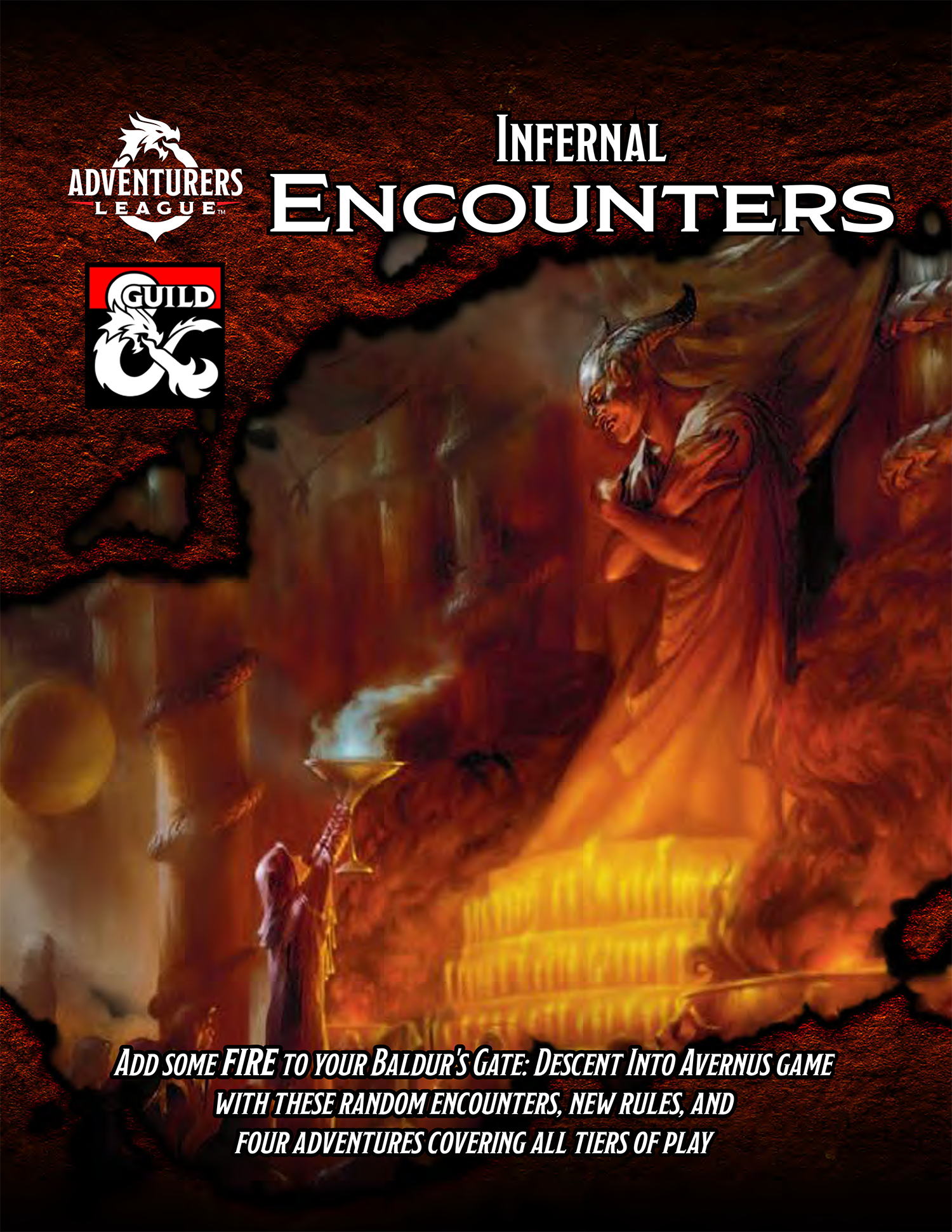
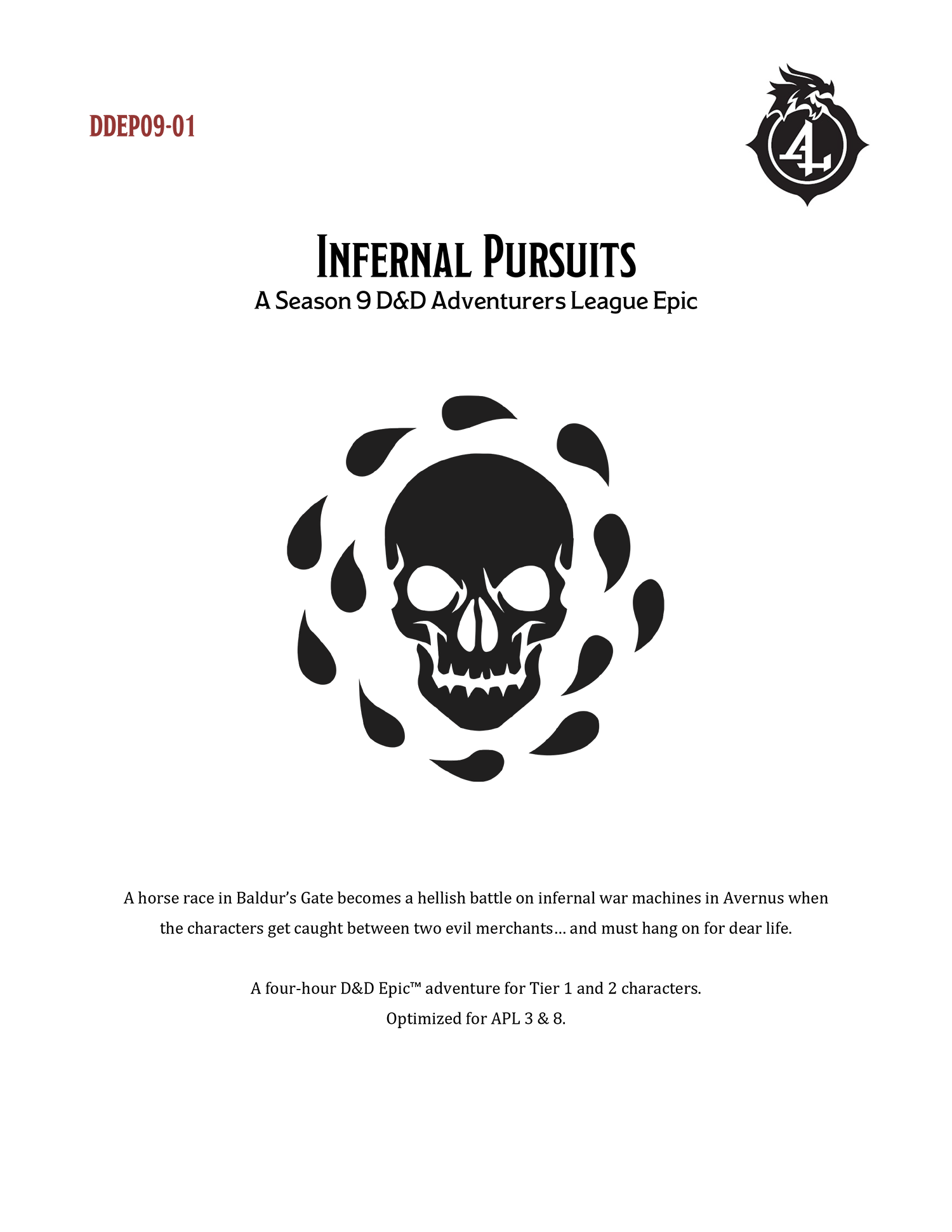 INFERNAL PURSUITS (DDEP09-01): This is a multi-table event, designed to be run by multiple GMs simultaneously for four or more groups of PCs. I’ve had a great deal of fun with such events in the past, and there are certainly compromises that have to be made in order to make events like this work. But Infernal Pursuits seems particularly stilted, with PCs not even being given the vaguest semblance of meaningful agency as they’re arbitrarily shoved from one combat encounter directly into the next.
INFERNAL PURSUITS (DDEP09-01): This is a multi-table event, designed to be run by multiple GMs simultaneously for four or more groups of PCs. I’ve had a great deal of fun with such events in the past, and there are certainly compromises that have to be made in order to make events like this work. But Infernal Pursuits seems particularly stilted, with PCs not even being given the vaguest semblance of meaningful agency as they’re arbitrarily shoved from one combat encounter directly into the next. HELLFIRE REQUIEM (DDEP09-02): This is another multi-table event that takes place in the village of Torm’s Hand, an otherwise unknown settlement supposedly “on the outskirts of Baldur’s Gate.” Here the recently deceased paladin Klysandral is being laid to rest and his mortal remains transformed into holy relics. Asmodeus is unamused and has sent agents to suck the whole temple into Avernus so that Klysandral’s remains can be corrupted.
HELLFIRE REQUIEM (DDEP09-02): This is another multi-table event that takes place in the village of Torm’s Hand, an otherwise unknown settlement supposedly “on the outskirts of Baldur’s Gate.” Here the recently deceased paladin Klysandral is being laid to rest and his mortal remains transformed into holy relics. Asmodeus is unamused and has sent agents to suck the whole temple into Avernus so that Klysandral’s remains can be corrupted. FORGED IN FIRE (DDOPEN2019): Forged in Fire is a tournament scenario with pregenerated characters. Three warlocks stole a puzzlebox from Thavius Kreeg. They have been captured by three paladins. But before the paladins can deliver them to justice, they all get sucked into Hell.
FORGED IN FIRE (DDOPEN2019): Forged in Fire is a tournament scenario with pregenerated characters. Three warlocks stole a puzzlebox from Thavius Kreeg. They have been captured by three paladins. But before the paladins can deliver them to justice, they all get sucked into Hell.
